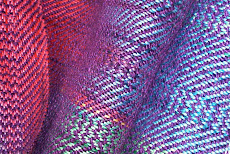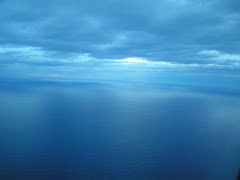I've been working on scouring a fabulous Karakul fleece. I love supporting the rare breeds and I love the locks of the Karakul. When I look at fleece I really do try to think... application... etc... but you know... it is so beautiful, those colors, the locks, the luster... I can't help myself. So well, I saw it and I bought it. Even a few years in the bag and it is coming out loverly. If we don't love and use these ancient and rare fleeces will the breeds survive. Spin-Off did a wonderful project a few years ago on rare sheep breeds that included people making projects using the fleeces of these wonderful critters. Eventually, it went into a book from Interweave. It brought about an important and meaningful awareness of these breeds. We really are so incredibly fortunate to have had sheep in our human history (but that's another soapbox for another day). Sheep are as important as dogs. Yes, they are. ;)
I went and found a lovely little explanation and history of the Karakul from the Sheep 101 site and it says (directly quoted)(including photo):
http://www.sheep101.info/breedsJ-L.html

Karakul Ram from Black Pines Sheep
http://www.blackpinessheep.com/images/other.htm
(Astrakhan, Bukhara, Persian Lamb)
The Karakul may be the oldest breed of domesticated sheep. Archeological evidence indicates the existence of the Persian lambskin as early as 1400 B.C. and carvings of a distinct Karakul type have been found on ancient Babylonian temples. Native to the plains of Central Asia, Karakuls differ radically in conformation from most other American breeds. They are of the fat broad tailed type of sheep. In their large tail is stored fat, a source of nourishment, similar in function to the camel's hump. In Central Asia and South Africa , large flocks of Karakuls are still raised for pelt production from very young lambs. The skins of baby lambs with their tightly curled wool are used in the "Persian lamb" fur trade. Karakuls were introduced to the United States between 1908 and 1929. They are a specialty breed in the U.S. Their fleeces, long and colorful, are prized by hand spinners. Karakul wool is the wool upon which the art of felting evolved. The Karakul classified as a "rare" breed by the American Livestock Breeds Conservancy.
Breed categories: double-coated, fat-tailed, rare
Distribution: USA, Africa, Middle East, Europe, Asia
END QUOTE ---
So I have been scouring, sorting, combing in preparation for spinning. Maybe tomorrow I will get some pictures taken before it all becomes yarn,,, but I have to say for a little fleece there is a whole lot of wool... scouring as I can with no big blocks of consecutive time is problematic at best and it tries my patience, cause I wants it done now! lol... oh well





2 comments:
We raise karakuls and the fleece is perfect for weaving rugs or felting for shoes.
I am really enjoying processing this fleece. I know it is good for rug weaving. I am hoping to do some finer work with it in the near future. It is my hope that since it is a hairer fleece it will show pattern well in weaving. What are your thoughts?
Post a Comment